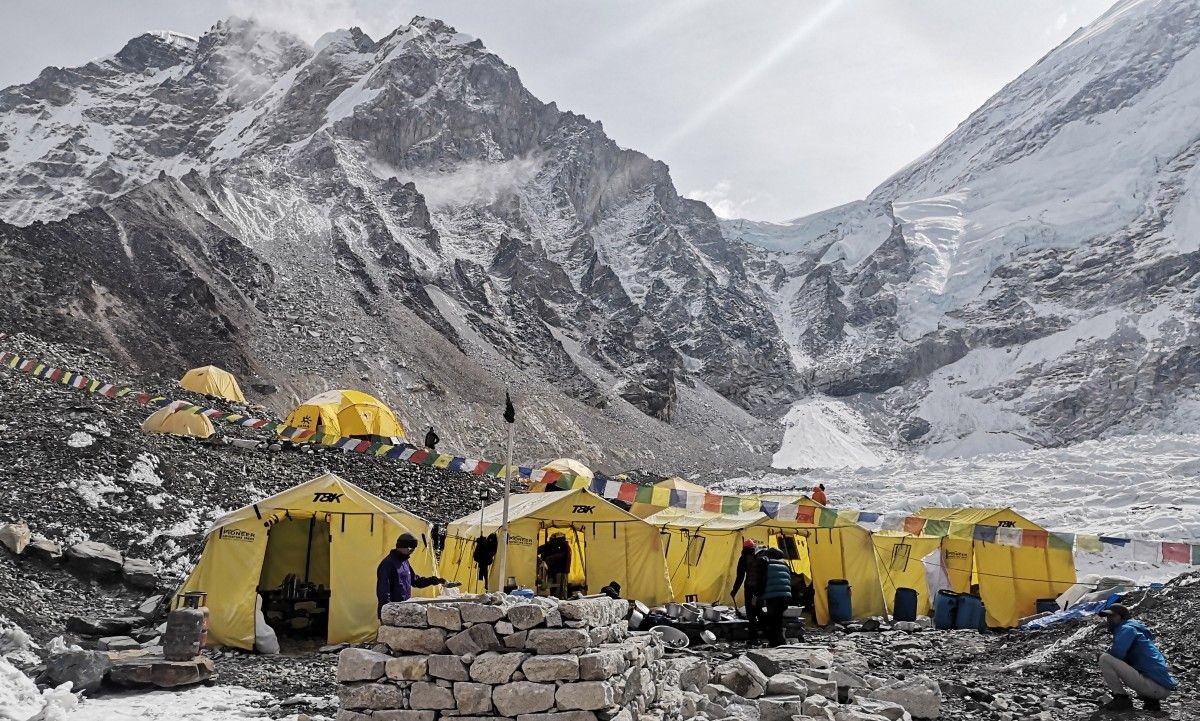Planning an expedition to Mount Everest, the world’s highest peak, is a monumental undertaking, and understanding the costs involved is crucial. The price of climbing Everest can vary significantly, typically ranging from $33,000 to $200,000, depending on several factors. This guide breaks down the costs associated with fulfilling this ultimate mountaineering dream.
According to recent data from ExpedReview, the average cost of an Everest expedition in 2024 is approximately $59,069, with a median price of $51,000. Excluding private and flash expeditions, the average price drops to $53,448, and the median to $50,500. These figures provide a general benchmark, but let’s delve into the specifics that influence the final price tag.
Everest Expedition Costs: A Detailed Breakdown
Several key factors contribute to the overall cost of climbing Everest:
- Guide Type: All-inclusive or logistics-only.
- Travel Expenses: Flights, permits, and insurance.
- Supplies and Gear: Oxygen, food, and mountaineering equipment.
1. Guide Services: All-Inclusive vs. Logistics-Only
The type of guiding service you choose significantly impacts the expedition cost.
-
Logistics-Only: This option is designed for experienced mountaineers who prefer a self-sufficient approach. You’re responsible for most arrangements, and costs range from $32,000 to $60,000.
-
All-Inclusive: This comprehensive package includes everything from permits and gear to Sherpa support and meals. All-inclusive expeditions typically range from $40,000 to $100,000, offering a hassle-free experience.
2. Travel, Permits, and Insurance: Essential Expenses
The journey to Everest Base Camp (EBC) involves several expenses:
- Visa and Immunizations: Expect to pay around $125 for a Nepali visa and $225 for required immunizations.
- Flights to Kathmandu: Depending on the airline and layovers, flights can range from a few hundred to over $7,000.
- Kathmandu to Lukla: Roundtrip tickets to Lukla, the gateway to Everest, cost between $300 and $500.
- Lukla to EBC: Food and lodging en route to EBC can amount to $400 to $1,000, depending on the quality of accommodations.
- Gear Transportation: Hiring yaks and porters to transport gear to base camp costs $20-$40 per day per load, totaling at least $1,000.
Permits and insurance are other essential costs:
- Permit Cost: The Nepalese government charges $11,000 per climber for the Everest permit.
- Additional Permit Fees: Organizing the permit through a local company costs around $2,500 per expedition. Additional costs include a non-refundable trash deposit ($4,000 per permit) and payment for a liaison officer ($3,000 per team).
- Insurance: Evacuation and medical insurance are mandatory, with costs ranging from $70 to $5,000, depending on coverage and trip length.
3. Supplies and Gear: Investing in Success
Proper gear and supplies are critical for a safe and successful Everest climb.
- Food and Fuel: Budget around $5,800 for food, fuel, and a cook for a six-week expedition.
- Supplemental Oxygen: Most climbers require supplemental oxygen, costing $550 per bottle. With at least five bottles needed, plus a mask ($450) and regulator ($450), the total oxygen expense can reach $3,650.
- Mountaineering Gear: High-quality boots, crampons, down suits, and other essential gear can cost around $7,000 if purchased new.
Factors Influencing Everest Expedition Costs
Several factors can cause price fluctuations in Everest expeditions from year to year:
- Permit Fees and Taxes: Changes in government fees and taxes directly impact the overall cost.
- Logistics Costs: Fluctuations in transportation and logistical support costs can influence prices.
- Inflation: Global inflation rates affect the cost of goods and services in Nepal, impacting expedition expenses.
- Season: The climbing season can affect prices, with peak seasons often commanding higher rates.
Caroline Pemberton, Managing Director of Climbing the Seven Summits, noted that climbing in the Himalayas generally increases in price each year. She also highlighted that macroeconomic factors, like inflation, exerted significant pressure on prices, causing a more considerable jump than in previous years.
Guide Options: Nepali, Western with Sherpa, and Western
The type of guide service you choose also influences the price:
-
Nepali Operators: These tend to be the most affordable, with a median cost around $39,499. Expeditions are typically led by experienced Sherpas, though formal qualifications may vary.
-
Western Guide Service with Sherpa Guide: This mid-range option has a median price of $47,995. The Sherpa guide usually holds a partial UIAGM certification, offering a balance of expertise and cost.
-
Western Guide Service with Western Guide: The most expensive option, with a median price of $65,000. Western guides typically hold full IFMGA/UIAGM certifications, potentially increasing your chances of summit success and minimizing risks.
Making an Informed Decision
Climbing Mount Everest is a significant investment, both financially and physically. Understanding the factors that contribute to the cost is essential for planning a successful expedition. By carefully considering your needs, experience level, and budget, you can choose the option that best suits your goals and increases your chances of reaching the summit of the world.

